2014 | Forum
“You Have to Know How to Break the Rules”
Working environments and the absurdities of the cultural establishment are two themes among many in this year’s Forum programme. In this interview, curator Christoph Terhechte also talks about variety of form in documental works and a happily kidnapped Michel Houellebecq.
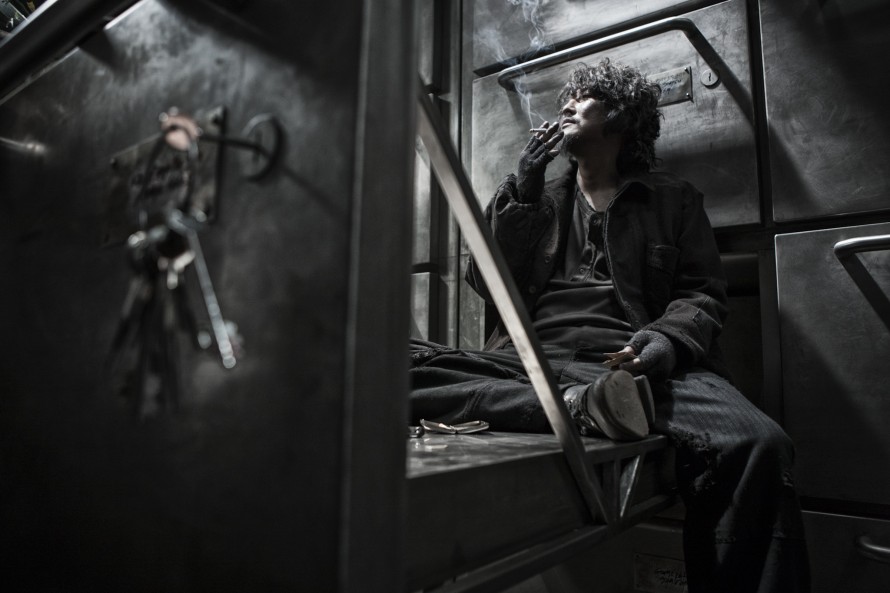
One of the highlights in the Forum 2014: the most lavish Korean film of all time Seolguk-yeolcha (Snowpiercer) by Bong Joon-ho
In your Press Release, you mention “merciless working environments” as a focus in the 2014 Forum programme. Is that focus intentional?
We don’t set a theme and then select films to fit it. But when we have enough films to choose from, we take care to create a well-rounded programme. And we saw very many films that dealt with the subject of work, since it becomes particularly important in unstable times. Not just the question of whether one has work or not, but also the question of the working conditions one is subject to. The 2014 programme looks into these issues with a multitude of different forms. For instance, Que ta joie demeure (Joy of Man's Desiring) by Denis Côté makes no criticisms of capitalism, but instead is fascinated by the fact that people can live and be creative in the strangest circumstances – by how flexible people are. The sound design of the film is a key element; it’s what conveys the spaces and places in the film, what gives the viewer a sense of them.
Then there are fiction films like Sto spiti (At Home) by Athanasios Karanikolas, which also combines brilliant images, but also conveys a clear social criticism. Sto spiti shows us a Georgian housekeeper who has served a Greek family for decades. When the head of the household goes bankrupt, she gets fired. The loss of her job also means the loss of her entire social environment. The fact that she belongs to a different class was ignored for ages. She sat at the family dinner table, went along with them to visit friends. Without her job, she has no more social affiliation. But it’s the quality of the film that’s decisive, not the fact that somebody has something to say. In Forum, we want to showcase the variety of form, the cinematographic possibilities.
Denis Côté’s film Vic+Flo ont vu un ours (Vic+Flo Saw a Bear) won a Silver Bear in Competition last year. Why did he decide to present his new film in Forum?
Forum has a reputation with many well-known directors for gladly showing their extravagant, artistic works. In between, they take their bigger works to Competition. Claire Denis, for instance, has been a frequent Forum guest because she knows her films fit in our programme and are well-received here. Denis Côtés’ fiction film Que ta joie demeure is one of those fiction-documentary hybrids. It’s very obviously a dramatization, but at the same time, it’s not a narrative film in the traditional sense.
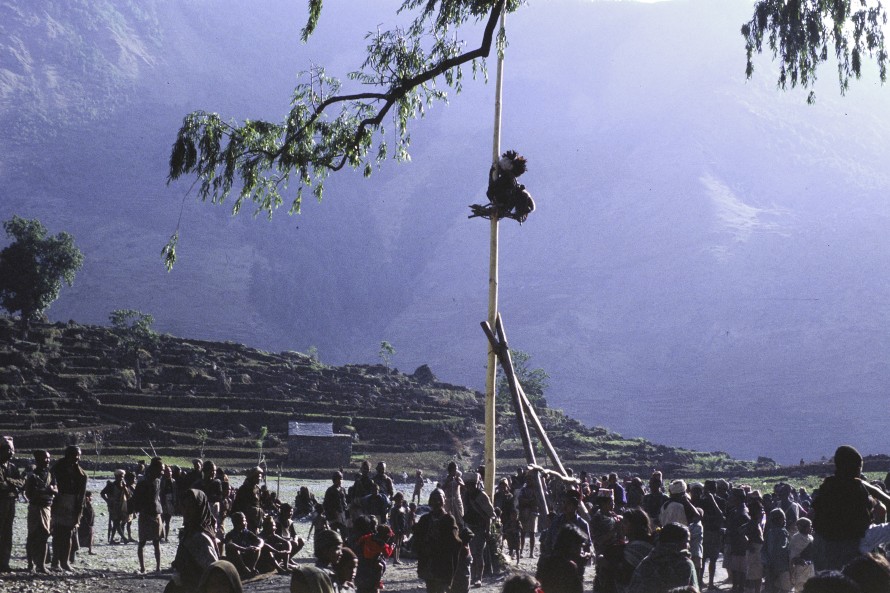
Schamanen im Blinden Land (Shamans of the Blind Country) by Michael Oppitz
Constructed documents of the visible world
The documentary film is the emphasis set for the 2014 Berlinale – across all sections. Does it make any sense to differentiate between fiction and documentary films in this day and age?
On one hand, I find the division relatively nonsensical, but on the other hand, the diversity of form - especially in documental film – must be given a platform, including the mixed forms. There are fiction films that approach the work of documentarists, and there are documentary films that are primarily constructs, or even performances. The question “Is this a documentary or fiction film?” is deceptive. Calling attention to the myriad of cinematic possibilities and strategies makes more sense. That’s one of Forum’s central missions, because we see ourselves as the festival section that sets store by not letting form be dominated by content.
Is the re-screening of Schamanen im Blinden Land (Shamans of the Blind Country), which premiered in Forum in 1981, part of that diversity?
Michael Oppitz’s film is one of those special kinds of documentaries. He does field research, participant observation as an ethnographic discipline. He stays on location as long as possible, immersing himself in the subject. This method still exists today, but it was in its heyday when the film was made. We’re showing it again because it was restored, and because it is the most successful film ever in Arsenal’s distribution history. Nowadays it’s been forgotten and not at all well-known in the younger generation. The re-screening is also meant to spotlight the work we do year-round. The festival is just a part of the process; we continue to work with the films we show here. We’ve been archiving copies since Forum’s birth - to make them available to the general public, but also to preserve them for the future.
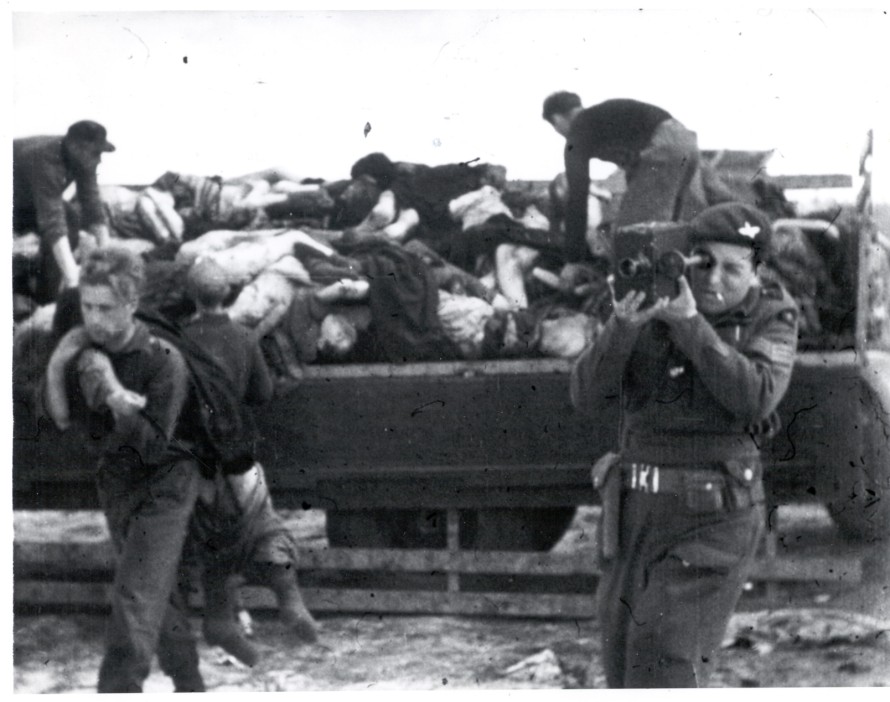
German Concentration Camps Factual Survey
Another of the very special documentaries awaiting the viewers must be German Concentration Camps Factual Survey…
That’s another film with a Forum history; the material was first screened here in 1984. The material we’re showing now, 30 years later, has been completed and restored. For a long time Alfred Hitchcock was listed as the director, but that doesn’t hold up on its own. Hitchcock did work on the material for around a month in London, and allegedly he had the idea for the structure of the film. The material was created by the camera teams that accompanied the Allied forces in order to document battle progress. At the same time, propaganda towards ending the Nazi racket in Germany was on the agenda. Most of the material comes from the British, who encountered the most horrifying scenes at the liberation of Bergen-Belsen concentration camp. That’s the first half of the film, which is expertly edited and manages to transform the terrifying images into a narrative – a milestone in documentary film, for sure. The film was meant to confront the Germans with their own complicity. But the Americans also had a say. They pulled the plug on the project relatively quickly because they needed Germany in the Cold War, and the pacification of the country was their priority, rather than its coming to terms with the past. The material landed in the archives of the Imperial War Museum and didn’t resurface until 1984. It definitely has its quirks, historically explainable ones. The commentary is from 1945 and includes some phrases that we definitely wouldn’t use today. But it’s a reconstruction, not a new film.
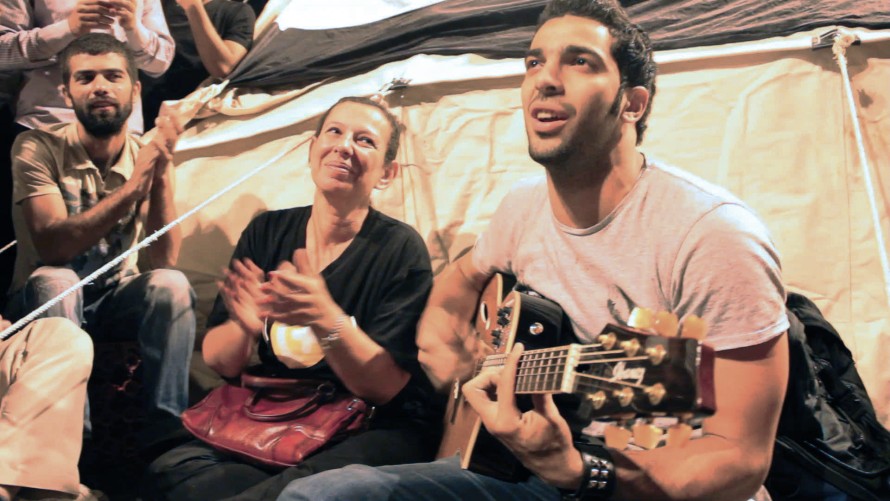
Al midan (The Square) by Jehane Noujaim
Political upheaval and a look into the past
Two more Special Screenings take on the situation in Egypt: Arij (Scent of Revolution) by Viola Shafik, and the Academy Award nominated Al midan (The Square) by Jehane Noujaim…
Both films are by women who don’t live the majority of their lives in Egypt, who bring with them a perspective from both inside and outside the country – which makes it easier to tell about what’s going on there. The films are very different. Viola Shafik eschews a chronological narrative of the revolution, and instead tries to relate the current events to the history of Egypt in the 20th century, touching on a number of different revolutions. After the conclusion of the Gamal Nasser era, the country was successively plundered by different regimes and devastated by corruption. A large portion of the film plays in Luxor, where the historic city centre fell victim to commercial interests and the needs of the people were ignored. A multifaceted film whose protagonists include a young Muslim woman who arranges to meet other avatars on Tahrir Square in her Second Life world – an interesting tangent.
The Square is a narrative documentary that follows the events chronologically and brings with it a very distinct view. It relies on four main characters involved in the protests on Tahrir Square and who experience various conflicts. One of them is a member of the Muslim Brotherhood, whose role is one of the subjects of the Revolution. The film takes up the position that the Revolution was co-opted by the Muslim Brotherhood. At that moment, the character becomes very ambivalent, because his loyalty is called into question.
At the time of the film’s making, the Muslim Brotherhood was not yet illegal. Can political upheaval be reasonably depicted as it is happening?
One could continue the film indefinitely, of course, but there had to be an end at some point – and The Square isn’t trying to be a permanent chronicle, but an observation of the mechanisms of that kind of national uprising. It interprets things more abstractly, it’s more universal, it illustrates how people get swept up into things and how they shape and drive multiple revolutions. History has no conclusion, so I think capturing images during the process is a legitimate endeavour. The film found its natural end in the stories of its characters, not in the political events.
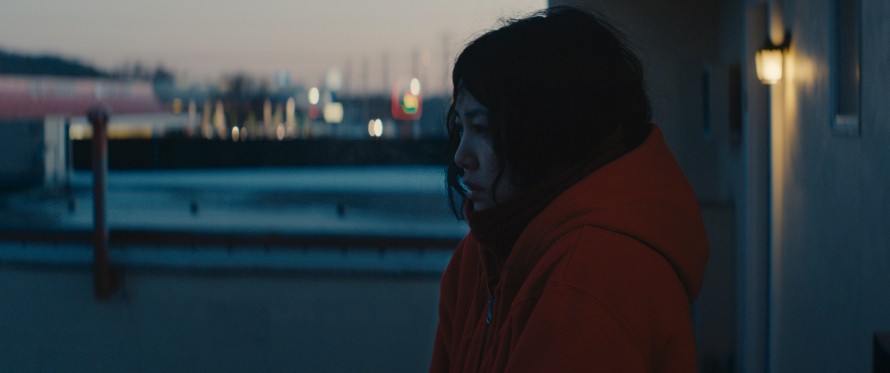
Kumiko, the Treasure Hunter by David Zellner
In Al doilea joc (The Second Game), we’re presented with a very different constellation of time. In it, a past event is commented live. What’s the film’s appeal?
In The Square, you have that location on your mind throughout the whole film. But in Al doilea joc, all you see are the images from a low-quality VHS cassette from 1988. It shows a snowy football game that’s hardly visible due to the weather – so the imagination works especially fast and intensely. And what you hear isn’t the original commentary, but the director of the film, Corneliu Porumboiu, who’s watching the game with his father, talking about how the latter went about his job during a Romanian league game in 1988 between the most important teams Steaua and Dinamo – who were also the favourite team of the Securitate and the Ceaușescus. How does an impartial referee act in a one-party system? They’re talking about football, but one is constantly thinking about the circumstances under which the game took place, namely the last years of the Ceaușescu regime. It’s fascinating how the film attains its richness through this minimalism.
Kumiko, the Treasure Hunter is another film in the programme in which a video cassette plays a central role…
Supposedly it’s a true story. The main character is a young Japanese woman. She finds a treasure, the aforementioned video cassette containing Fargo by the Coen brothers. She starts the cassette and despite the poor quality, the first panel text “This is a true story” is readable. She sees Steve Buscemi’s character bury a suitcase full of money. So she flies to Minnesota and sets out through the deep snow to find it. The film is the story of what happens to her along the way – an extremely entertaining story, told with really magnificent images.
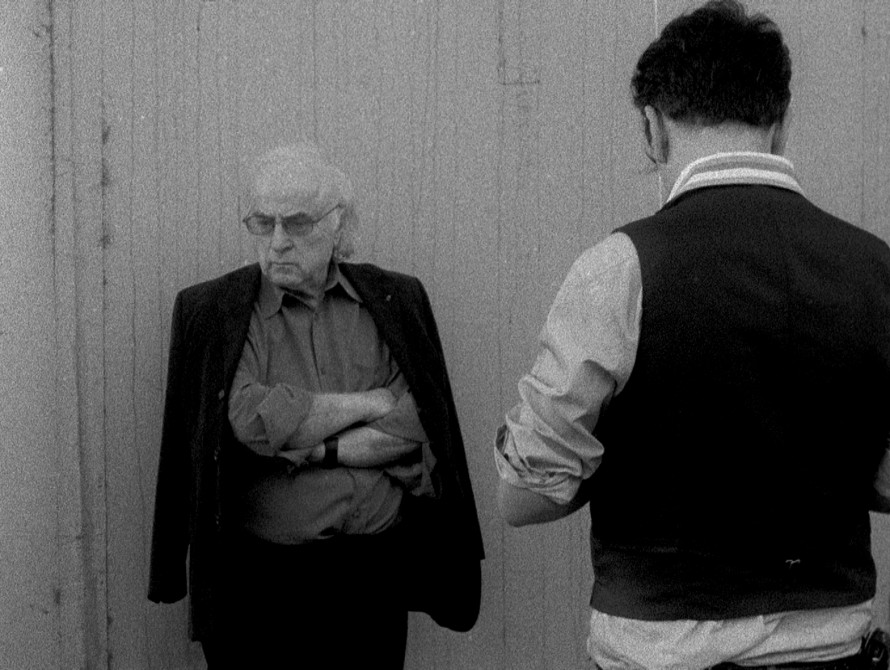
Le beau danger von René Frölke
The madness of self-portrayal
Another focus is on the “absurdities of the cultural establishment” as it was described in your press release. How do the films approach this subject?
Le beau danger is a portrait of the Romanian author Norman Manea, but the film isn’t about the person behind the literature in the conventional sense. Rather, it reflects on the question of what text really is, and how it is represented. Script titles transform language into pictures. At the same time, the film delves into the everyday life of an author, and of the culture industry, where part of the madness is that it sometimes has nothing to do with the aesthetics, the artistic mind, or the content of literature. There are actually several films that deal with the subject in this year’s programme.
Another example is the satirical L'enlèvement de Michel Houellebecq (The Kidnapping of Michel Houellebecq) by Guillaume Nicloux. The first part of the film follows Michel Houellebecq in his everyday, upper middle class life. It gets fun when he is kidnapped. The author gets along much better with the not-exactly-evil-geniuses who have kidnapped him than with the Parisian bourgeoisie. They chain smoke and drink lots together. When Michel Houellebecq asks them for a book, they give him the only book they can find in the house, La Religieuse by Denis Diderot - the same material that director Guillaume Nicloux showed here last year in Competition. An ironic look back at his foray into serious cinema. Dirty little satires of the vicious kind are more his métier.
Das große Museum (The Great Museum) by Johannes Holzhausen, on the Kunsthistorisches Museum in Vienna, goes beyond the institution portrait, à la Wiseman, showing how even a venerable establishment of that calibre can become thoroughly capitalised, and its event management subject to modern times – where the effects are all that matter anymore. Two worlds clash – that of the fusty archivists with that of the whippersnappers who don’t care at all about content anymore, and could just as well be running a candy factory. A really lovely film on the many meanings that a museum carries today. And emblematic for what we do here, because the Berlinale is also a balancing act between the cinematic art we want to showcase, and the annual spectacle that the Berlinale represents.
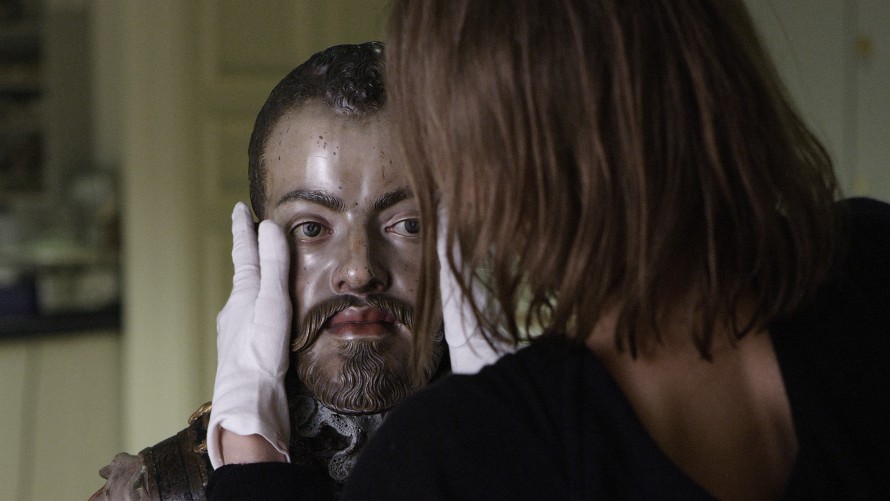
Das große Museum (The Great Museum) von Johannes Holzhausen
Souvenir by André Siegers sounds like facebooking of the worst kind. Is that impression off the mark?
This sort of politician does exist today in some places, the ones who do nothing but twitter or profile themselves on Facebook and otherwise completely neglect politics. Souvenir is about a supposedly missing political functionary who for many years acted like the main character in the movie of his own life. And then, the material is found by the filmmaker – a treasure mounted for appreciation, a life on display. The film carries within it the madness of today’s circular media re-hashing. It shows a person who doesn’t enter into an election campaign to do politics, but because he saw a film about election campaigning, namely Herr Wichmann von der CDU by Andreas Dresen.
With all the terabytes of moving pictures that are uploaded every day in mind: when does an assembly of images become a film?
Everybody has to answer that question for themselves. I’m sure there are people who would say that Souvenir isn’t a film; I have to accept that. But there are also people who watch 90 minutes of colours playing on a screen and call it a film. At the same time, not every montage is a film. Just because someone doesn’t follow the rules doesn’t mean they’ve made the better film, in Forum’s eyes. You have to know how to break the rules, and there’s no rule for that. Everybody has to find that path for themselves and impress an audience with it.